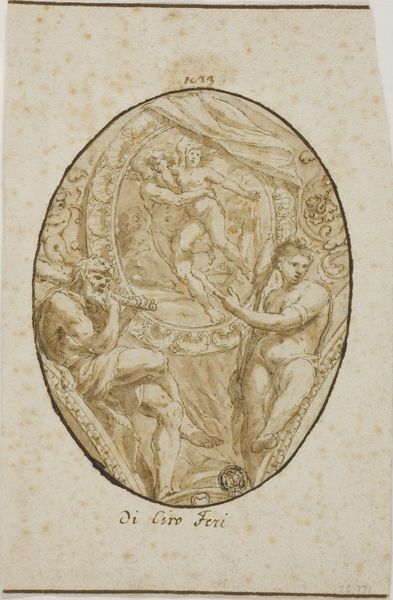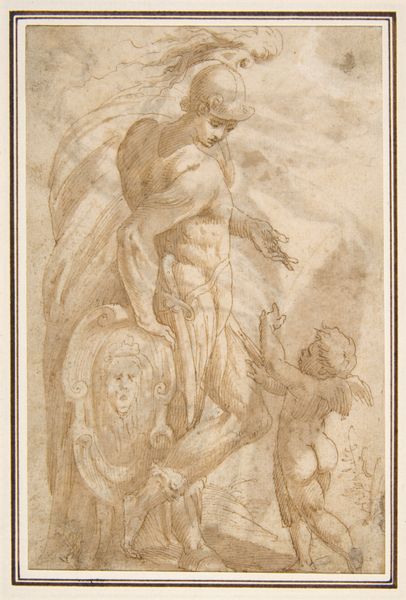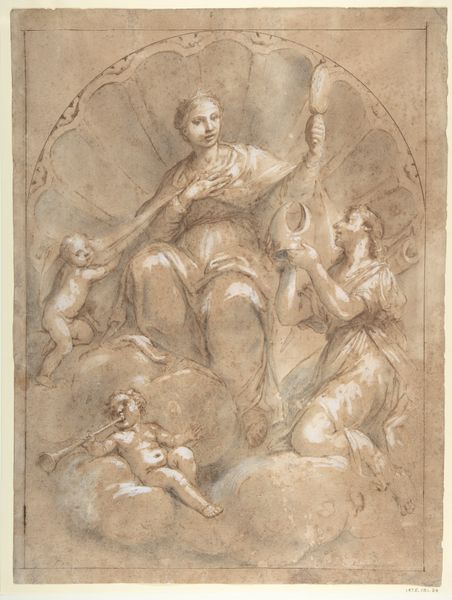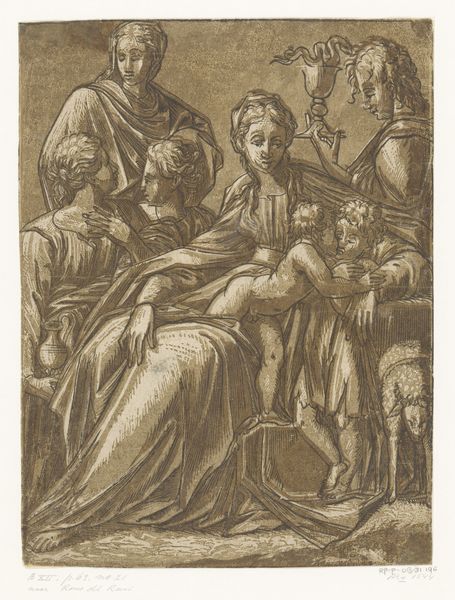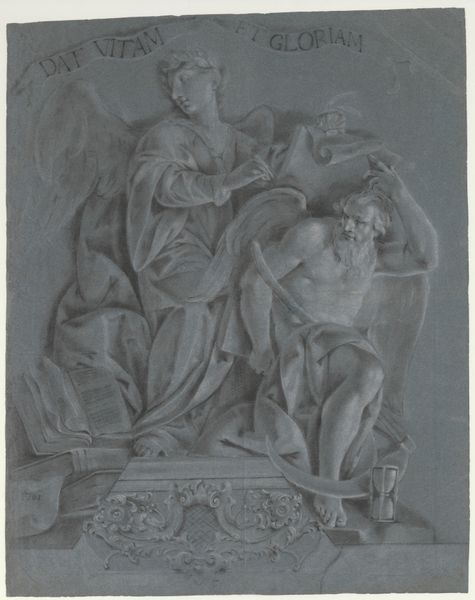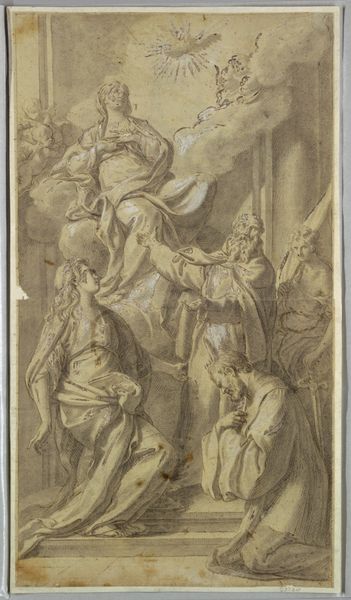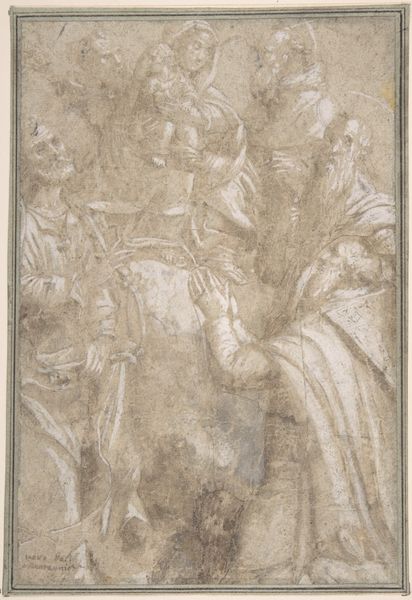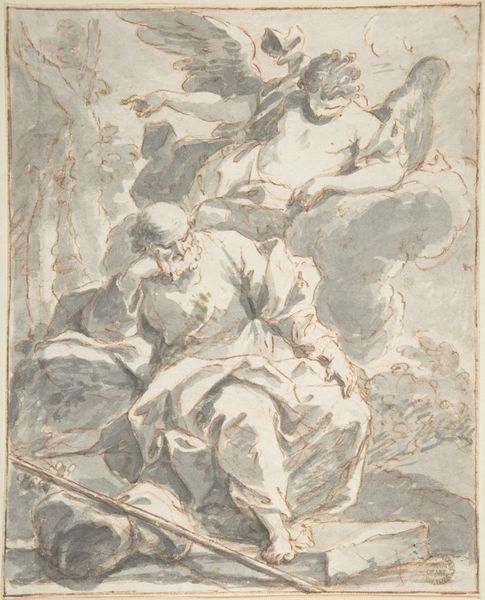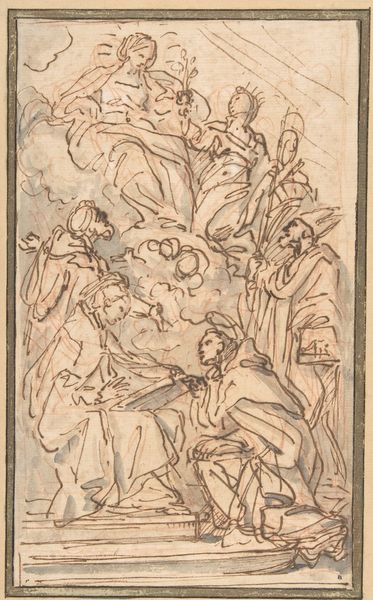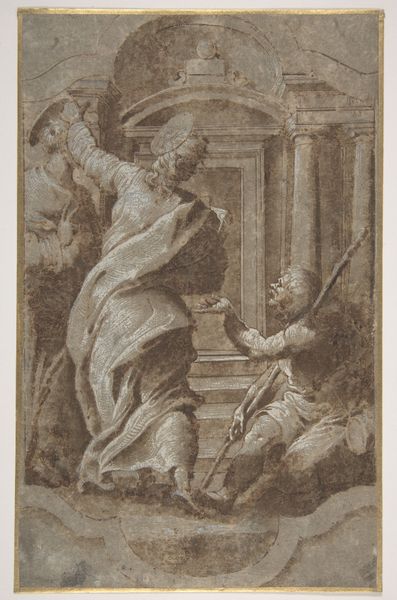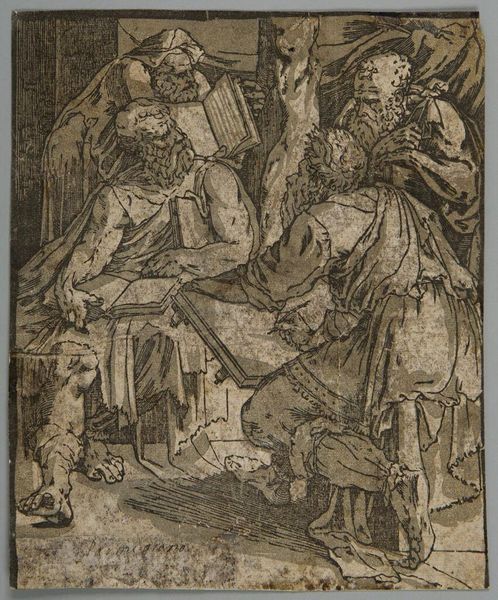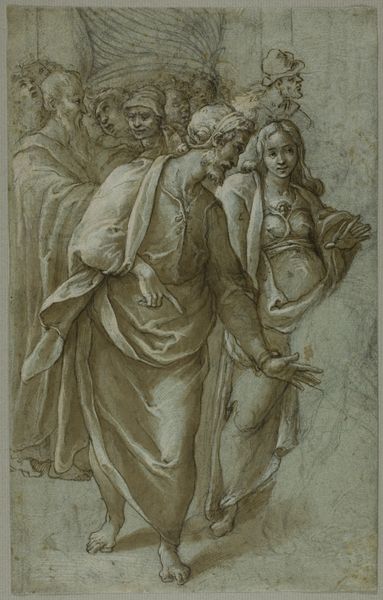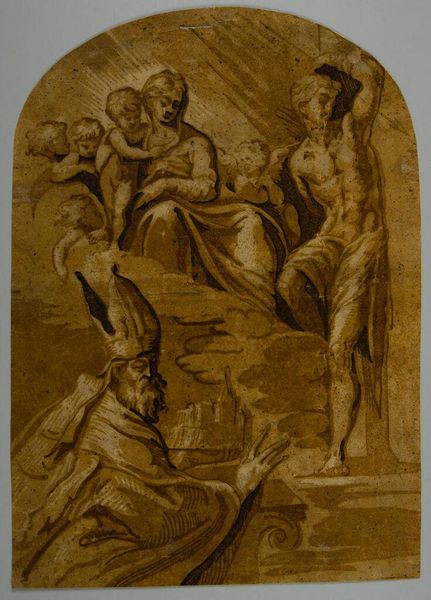
The Holy Family with the Infant Baptist 1521 - 1575
0:00
0:00
drawing, print, pen
#
portrait
#
drawing
#
toned paper
# print
#
figuration
#
oil painting
#
child
#
pen
#
history-painting
#
italian-renaissance
Dimensions: 5 11/16 x 4 3/16in. (14.4 x 10.6cm)
Copyright: Public Domain
Editor: Here we have Girolamo Siciolante da Sermoneta's "The Holy Family with the Infant Baptist," created sometime between 1521 and 1575. It's a pen drawing on toned paper, a more subdued piece compared to the vibrant oil paintings from that era. I’m struck by how intimate the grouping feels, despite the formal poses. What do you make of the emotional tone conveyed through the imagery? Curator: Indeed. The emotional tone is skillfully embedded within recognizable symbolic structures. Note the careful arrangement – Mary, Joseph, and the infants – positioned not merely as figures, but as representations of faith, lineage, and destiny. Think about the colours themselves. Why do you think the artist chose to work with toned paper and pen, avoiding bright colors? Editor: Maybe to create a sense of timelessness or perhaps to focus on the figures' internal states rather than surface appearances? The lack of bright colour lends an air of solemnity, I suppose. Curator: Precisely! The restrained palette guides us towards introspection, a characteristic often found in devotional art meant for private contemplation. The image references not only Christian belief, but also reflects a specific cultural understanding of family and the roles within it. Consider Joseph's protective gesture, Mary's tender gaze…what do these say about the social expectations of the time? Editor: That's fascinating. I hadn’t considered how the artistic choices so directly relate to the social and religious context. It makes me see beyond the surface of the drawing itself, into the cultural beliefs that shaped it. Curator: Exactly! Images act as powerful carriers of cultural memory. And understanding their symbolism allows us to access that memory.
Comments
No comments
Be the first to comment and join the conversation on the ultimate creative platform.
